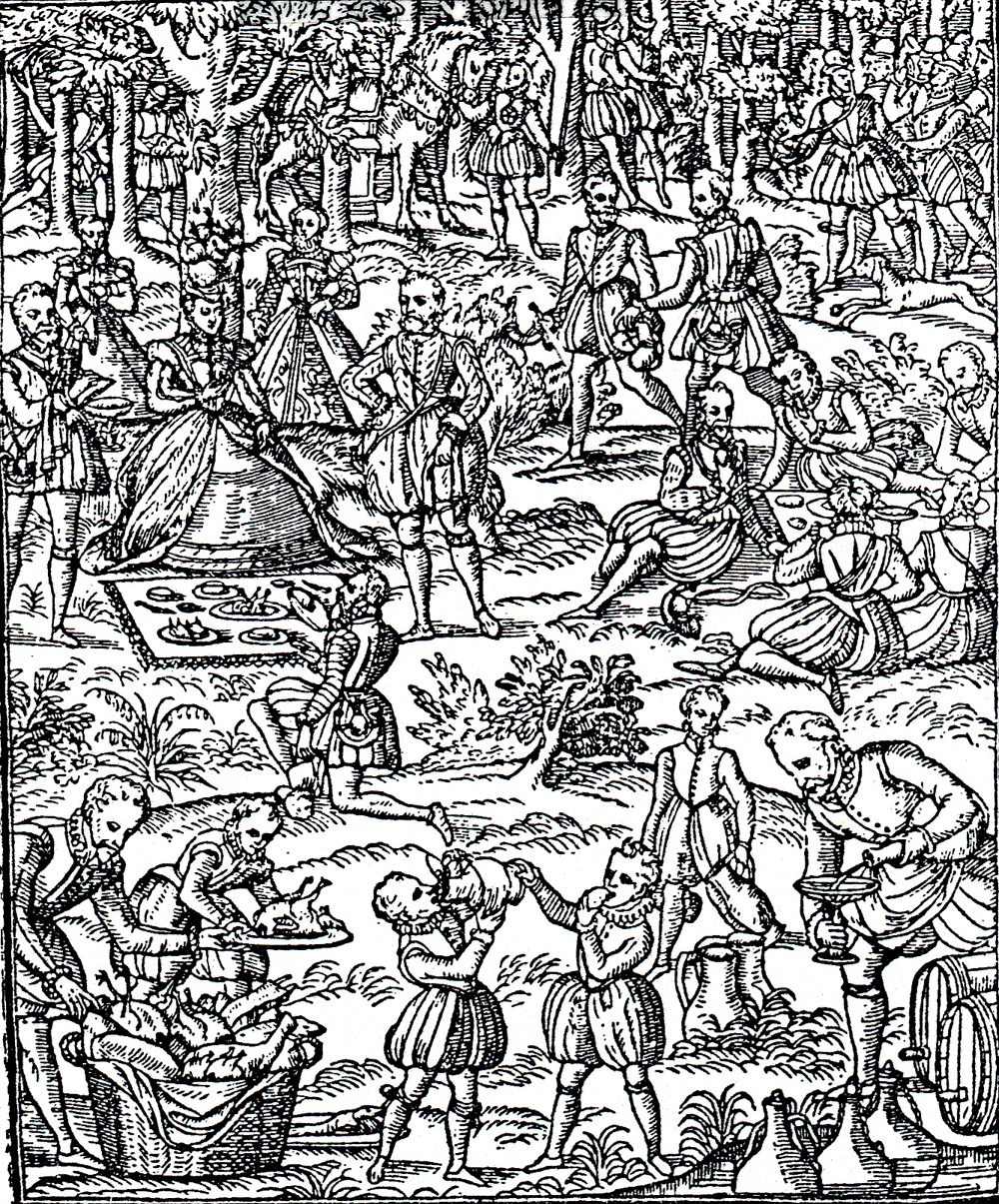 Gascoigne adapted Gaston Phébus’s The Book of the Hunt (1380) and Jacques du Fouilloux’s in La Venerie (1560) into English, retitling the work The Noble Arte of Venerie or Hunting (1575). (The book is dedicated to Lord Clinton, Elizabeth’s master of...
Gascoigne adapted Gaston Phébus’s The Book of the Hunt (1380) and Jacques du Fouilloux’s in La Venerie (1560) into English, retitling the work The Noble Arte of Venerie or Hunting (1575). (The book is dedicated to Lord Clinton, Elizabeth’s master of...
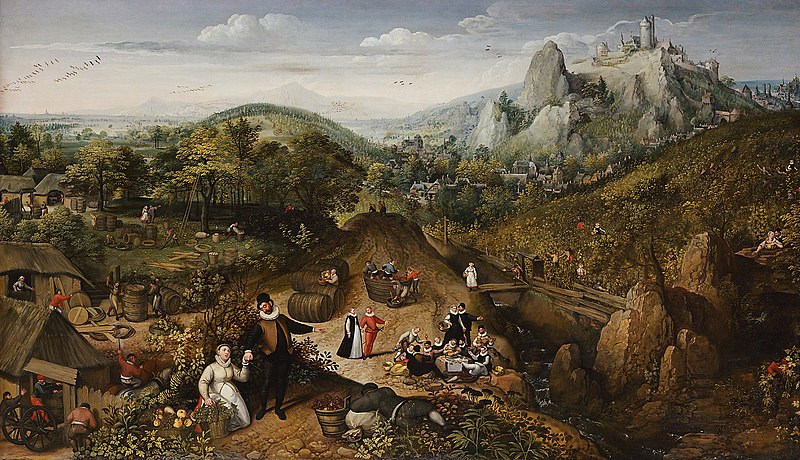 Valckenborch must have loved dining, food, and wine. His paintings are filled with depictions of meats, fish, and fruits, so he might be called a painter of feasting. His calendar paintings, such as the one celebrating October’s bountiful grape harvest, include an...
Valckenborch must have loved dining, food, and wine. His paintings are filled with depictions of meats, fish, and fruits, so he might be called a painter of feasting. His calendar paintings, such as the one celebrating October’s bountiful grape harvest, include an...
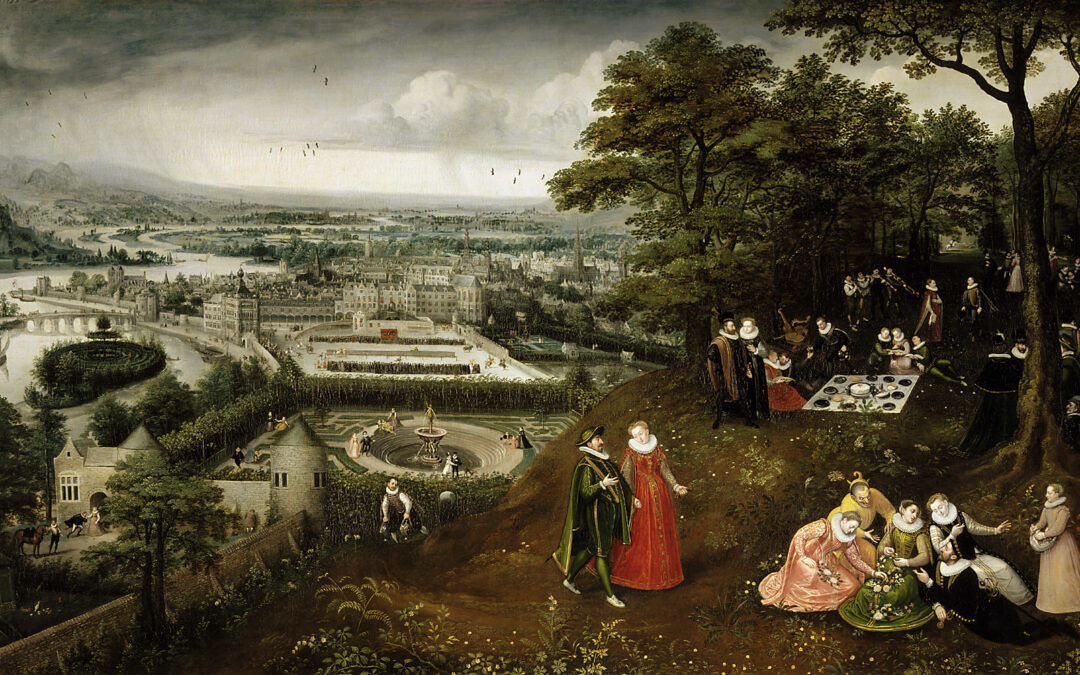 Valckenborch’s Spring, aka Frühlingslandschaft (Mai), depicts the new season arousing a desire for revelry after winter’s confinement. It’s part of a series of calendar paintings celebrating the months of the year and appropriate seasonal activities. Though, in this...
Valckenborch’s Spring, aka Frühlingslandschaft (Mai), depicts the new season arousing a desire for revelry after winter’s confinement. It’s part of a series of calendar paintings celebrating the months of the year and appropriate seasonal activities. Though, in this...
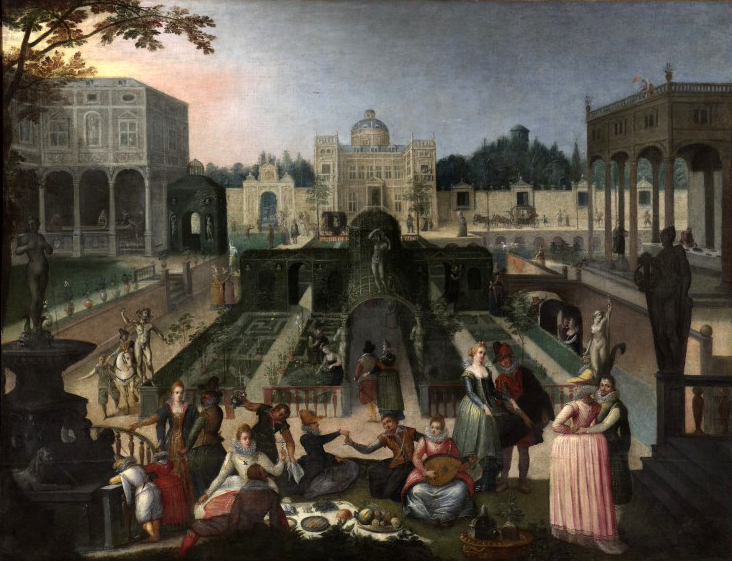 Feast In The Park Of The Duke Of Mantua or Fête dans le Jardin du Duc de Mantoue is picnicky but not a feast. The curators of the Musée des Beaux-Arts probably assign the title. It is a garden of lovers dining alfresco in an imaginary architectural setting. The...
Feast In The Park Of The Duke Of Mantua or Fête dans le Jardin du Duc de Mantoue is picnicky but not a feast. The curators of the Musée des Beaux-Arts probably assign the title. It is a garden of lovers dining alfresco in an imaginary architectural setting. The...
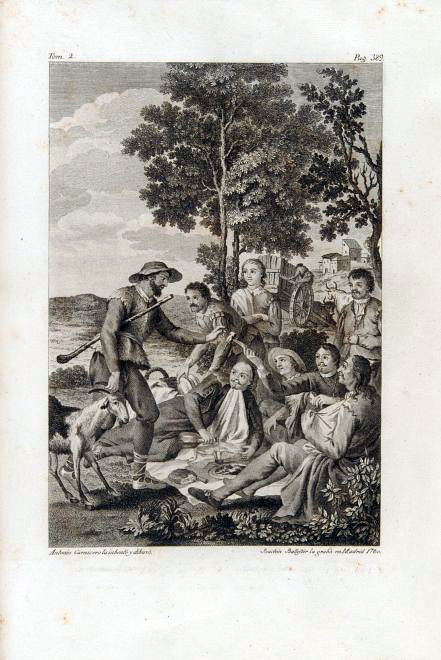 Cervantes’s merienda looks like a picnic on the grass. It occurs while, Don Quixote and Sancho engage in a spirited discussion of the uses of enchantment and the power of imagination with the Canon, the curate, and the barber. They sit on the grass waiting for...
Cervantes’s merienda looks like a picnic on the grass. It occurs while, Don Quixote and Sancho engage in a spirited discussion of the uses of enchantment and the power of imagination with the Canon, the curate, and the barber. They sit on the grass waiting for...
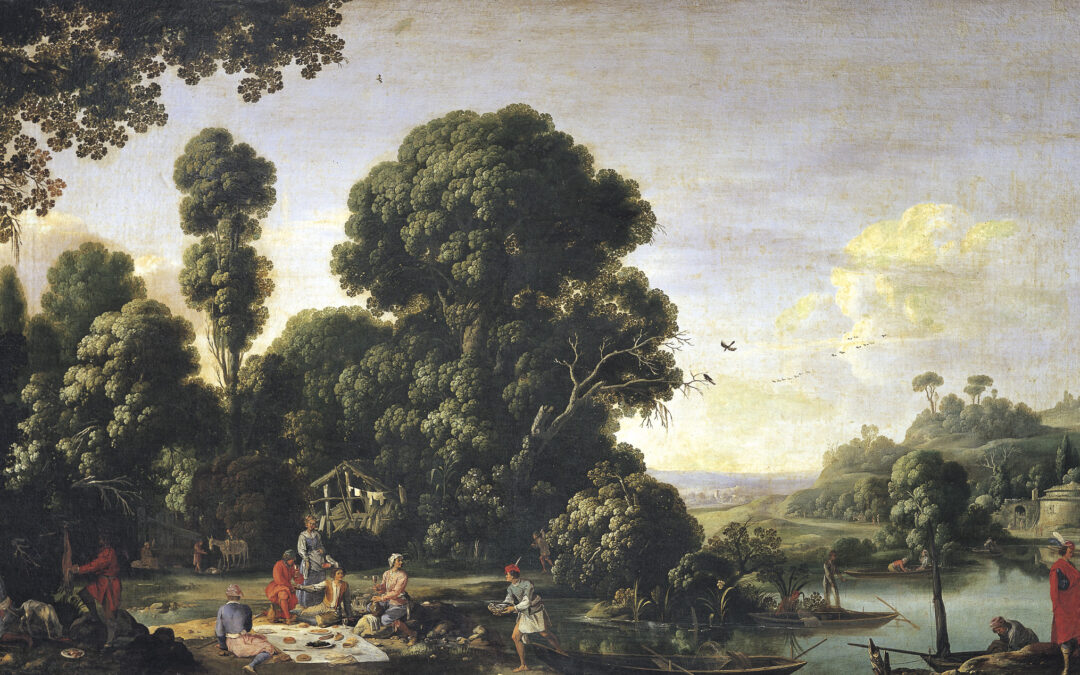 Napoletano’s Merenda sull’erba is a landscape with Florentines enjoying an informal outdoor lunch by a lake. Merenda is Italian for picnic, which was not coined until 1649 in Paris. The picnickers have spread their cloth in the shade. To the left, a cook works at a...
Napoletano’s Merenda sull’erba is a landscape with Florentines enjoying an informal outdoor lunch by a lake. Merenda is Italian for picnic, which was not coined until 1649 in Paris. The picnickers have spread their cloth in the shade. To the left, a cook works at a...
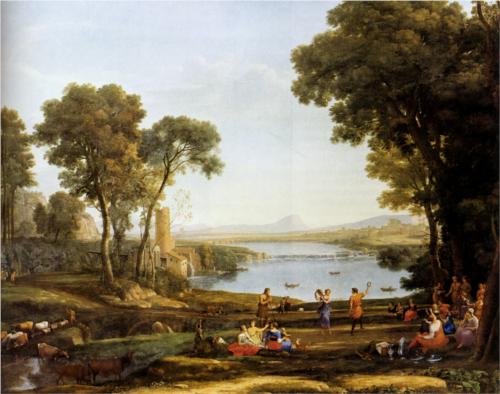 Claude should have named his painting scampagnata (holiday in the country), merenda sull’erba, or lolazione sull’erba (picnic on the grass). But Claude enhanced Landscape with the Marriage of Isaac and Rebecca with a biblical allusion to Genesis, 24, the...
Claude should have named his painting scampagnata (holiday in the country), merenda sull’erba, or lolazione sull’erba (picnic on the grass). But Claude enhanced Landscape with the Marriage of Isaac and Rebecca with a biblical allusion to Genesis, 24, the...
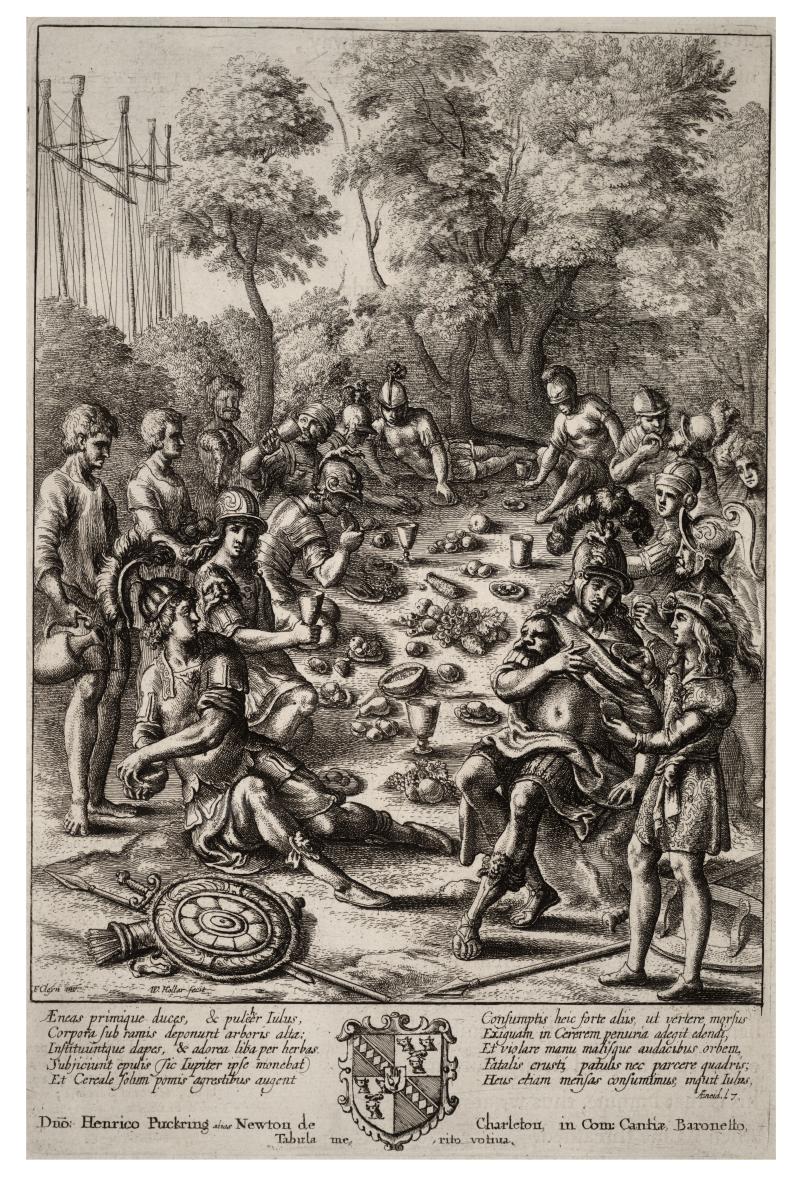 Hollar illustrates the key moment in Virgil’s Aeneid (19 CE) when Aeneas realized that he had reached the land where he would build a new city where Trojans would prosper. The chosen moment is when Aeneas and his crew bivouac in a forest clearing in Latium and...
Hollar illustrates the key moment in Virgil’s Aeneid (19 CE) when Aeneas realized that he had reached the land where he would build a new city where Trojans would prosper. The chosen moment is when Aeneas and his crew bivouac in a forest clearing in Latium and...
 Milton never uses the word picnic or any synonym but knows the concept and uses it freely for satiating Adam and Eve in Paradise before the Fall in Paradise Lost. Because they had no means of cooking, Milton supposes that Adam and Eve were inadvertent Vegans...
Milton never uses the word picnic or any synonym but knows the concept and uses it freely for satiating Adam and Eve in Paradise before the Fall in Paradise Lost. Because they had no means of cooking, Milton supposes that Adam and Eve were inadvertent Vegans...
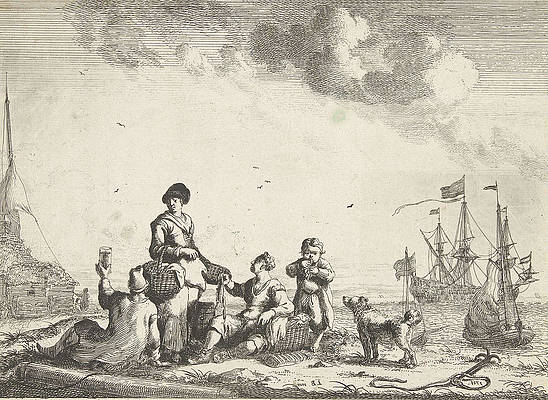 Bakhuizen embellished this seascape (his usual subject) with a group of picnickers. Picnick ann zee’s contemporary title is appropriate but inaccurate because picnic was not applied to an alfresco meal in 1701. Pique-nique had only been included in Gilles...
Bakhuizen embellished this seascape (his usual subject) with a group of picnickers. Picnick ann zee’s contemporary title is appropriate but inaccurate because picnic was not applied to an alfresco meal in 1701. Pique-nique had only been included in Gilles...











